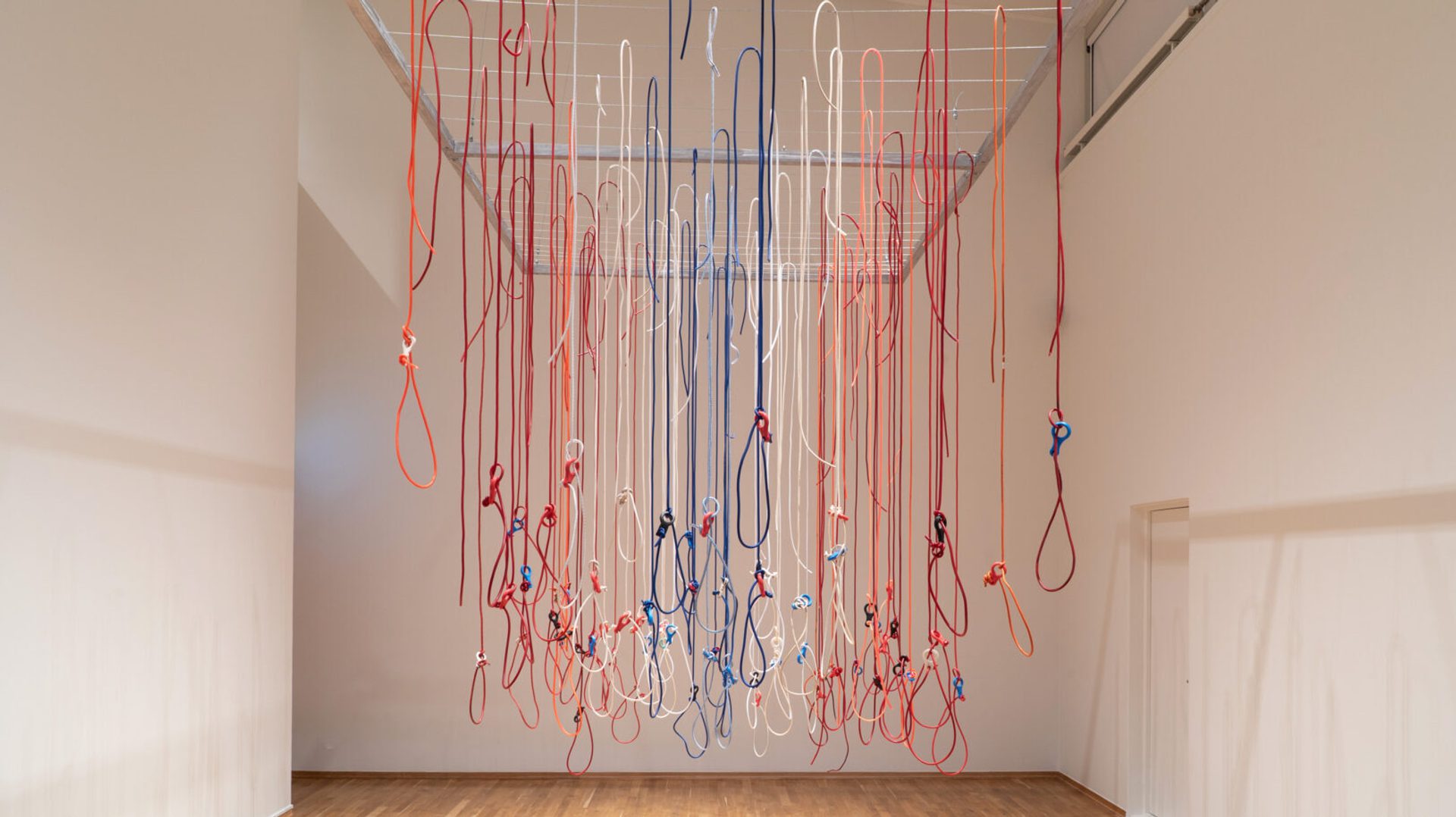Máret Ánne Sara: Gielastuvvon

Curator Dr. Charis Gullickson says about the work: “Máret Ánne Sara, who was this year’s festival artist in Harstad, will soon exhibit at the Turbine Hall at Tate Modern in London. Gielastuvvon is an important part of our collection. I believe the work is significant because it addresses major social, ecological, and political issues. Through the use of recycled materials, it engages the audience, raises awareness, and demonstrates the power art has to create change in society.”
Máret Ánne Sara is a Sámi-Norwegian artist and author based in Kautokeino/Guovdageaidnu. She works with sculptures and installation based on Sámi materials and culture which are entry points into accessing Sámi ways of understanding the world. She is also known for her involvement in political causes, especially related to reindeer herding. She co-founded the Sámi artist collective Dáiddadállu in 2014 and has exhibited widely, including at documenta 14 (2017), and as part of «The Sami Pavilion» at the Venice Biennial (2022). When the Nasjonalmuseet opened their new building in Oslo, Sara’s Pile O’Sápmi Supreme was the first artwork visitors saw when they entered the lobby.
This monumental installation Gielastuvvon consists of Sámi lassoes («suohpanat») that Máret Ánne Sara has collected from reindeer herders in Guovdageaidnu/Kautokeino and the surrounding area. Each «suohpan» bears the mark of its use and former owner and as such, is a reminder of the hard work, weather and wind each herder faces as they tend to their herd. Not least, they represent the fight to protect their right to reindeer herding as a Sámi livelihood, right and tradition.
The title, Gielastuvvon is Northern Sámi and plays on the word «giella» which means both snare and language. The artist sees the work as a continuation of the series Pile O´Sapmi, which followed the trial of her brother, Jovsset Ánte Sara, which eventually reached the Supreme Court. Both artworks criticize the Norwegian state for imposing a reduction in reindeer numbers and forcing herders to cull the herds, rendering the practice costly and inconvenient, especially for young herders. With Gielastuvvon Maret Anne Sara draws particular attention to the personal challenges that the Norwegian state regulations have caused to the herders, individually and collectively.
Høysalen: Recent Acquisitions
Over the coming months, this room will be dedicated to the display of works from the museum’s collection by female and non-binary artists from Sápmi/Northern Norway. These are all recent acquisitions, meaning that they have been part of the museum’s collection for less than five years. Nordnorsk Kunstmuseum is engaged in the research, dissemination and care of a collection of over 2,225 works from the 17th century to today. However, as was highlighted in a previous exhibition titled 28%, women continue to be underrepresented in collections nationally and world-wide.
This space is now dedicated to sustained encounters with single works, ensuring that as these works are collected, they are given their due display. The works that will circulate through this space deal with some of the most pressing issues of the moment; Indigenous sovereignty, spirituality, gender, and the ways in which capitalism and colonialism have worked in tandem to dispossess the vulnerable and destroy the environment. The exhibited artists, though they are all female-identifying or queer from Sápmi/Northern Norway, span a variety of mediums and styles. Their work reflects the diversity of artistic expression and the rich cultural specificity of the region.